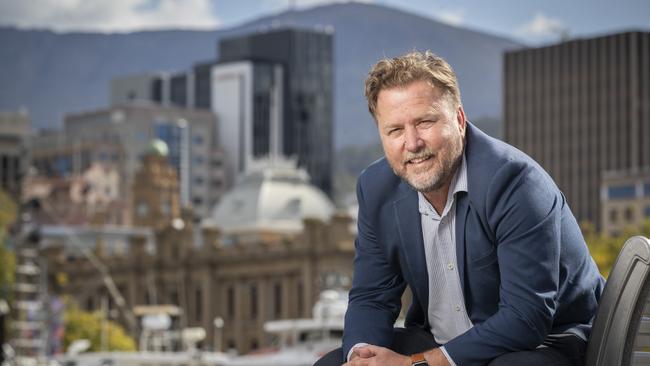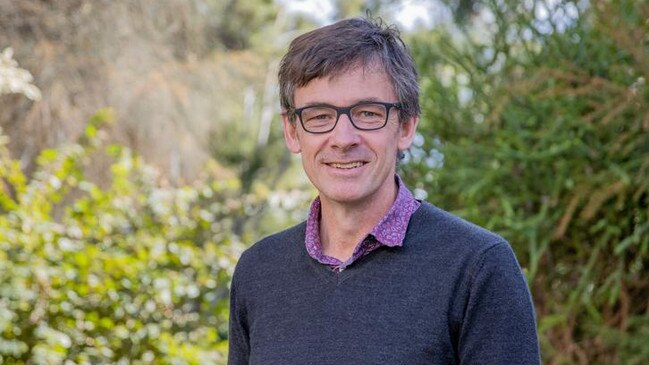Future Tasmania: A leader in renewable energy, our future looks brighter and cleaner
Welcome to the future, Tasmania. Over the next two weeks, the Mercury and its partners will explore the state’s future as a renewable energy powerhouse. THE CAMPAIGN >
News
Don't miss out on the headlines from News. Followed categories will be added to My News.
Welcome to the future, Tasmania.
Today the Mercury kicks off Future Tasmania – a two-week campaign culminating with a lunch on March 31, where the Mercury, in print and online, will explore the state’s future as a renewable energy powerhouse.
Currently, Tasmania is in an enviable position: we are the only state in Australia, and one of only a few jurisdictions in the world, that can claim to use 100 per cent renewable energy.
But as our state expands and grows, do we have enough renewable power to keep up with demand?
A University of Tasmania report says we do, on one proviso – we make changes to the way we live.

If, however, we stick with the status quo and don’t adapt to new ways of generating power, doing business and living our lives we could lose our carbon neutral title as early as 2030.
And that’s a big deal, because Tasmania’s advantage and reputation in the new carbon-conscious world would take a hit.
As Professor Richard Eccleston, director of the Tasmanian Policy Exchange for the university, says, the fact the state is now powered by 100 per cent renewable energy is a massive advantage, not just for the environment but also the state’s brand.
“First of all, it’s the kind of brand and reputation a lot of companies are interested in, having that kind of story around their products,” Professor Eccleston said.
“The fact that we’ve essentially got 100 per cent renewable energy means that a lot of producers, once you look at the carbon that goes into products, are at an advantage.”
He said consumers were now making choices about products and their carbon footprint.
At the same time, other governments around the world are making commitments around reducing their emissions. Some are even imposing taxes on products that have a high carbon content.
“That has led to multinational corporations and big companies making decisions about changing products and processes,” Professor Eccleston said.
“So we need to make sure that Tasmanian businesses that are in the export game or who are part of global operations are at the front of the queue in terms of thinking about those kinds of new technologies.
“So reducing emissions is really, really important but we also need to make sure that we try to lead in terms of reducing emissions across the entire community and economy.
“That’s what it’s all about, future-proofing our industries.”
While increasing the state’s renewable energy output is one lever that can be pulled, there are many other ways the state can reduce its dependency on fossil fuels.
The UTAS report Tasmanian Greenhouse Gas Emissions Update highlights farming, public transport and the use of more electricity in homes as ways to help retain our carbon-neutral status.
The use of seaweed for stock feed was one idea leading the way in Tasmania’s agriculture sector, while a better public transport system would be the fastest way to lower emissions on the road.
Professor Eccleston said electric vehicles would have an impact and be important in the long term, but more people using public transport was a way to move the dial quickly.
“How can we live smarter with public transport? It’s about the long-term planning piece,” he said.

“Greater urban consolidation, so our housing and communities are designed so that you don’t become completely dependent on cars.
“It’s just a behavioural thing.”
Tassie was also leading the way in the development of electric ferries as a form of public transport.
“I think InCat is a really good example of what can be done,” Professor Eccleston said.
“They have a good international reputation for high-speed catamarans, and they’ve been an innovator in that space.”
Professor Eccleston said while there was still some work to do, he was very positive about the future of the state.
“Thinking about Tasmania’s future, I’m optimistic,” he said.
“The economy’s strong, there’s very low unemployment.
“There are a few storm clouds brewing on the horizon, you know, internationally. But there’s strong population growth in Tasmania, it has been discovered.
“And I think, more significantly, Tasmanians have confidence in the state and in the community.”
Over the next two weeks, the Mercury and its partners will explore the renewable energy space and hopefully set up a road map to a brighter, cleaner future for the state.





